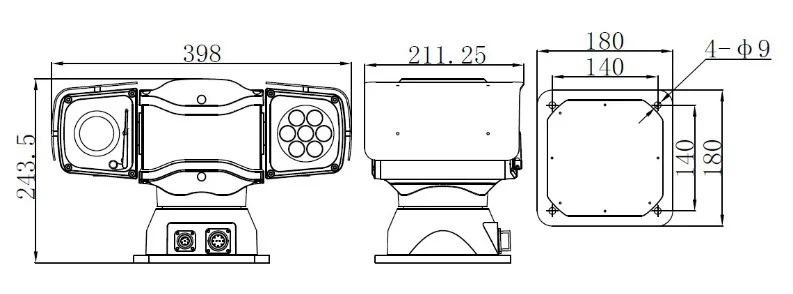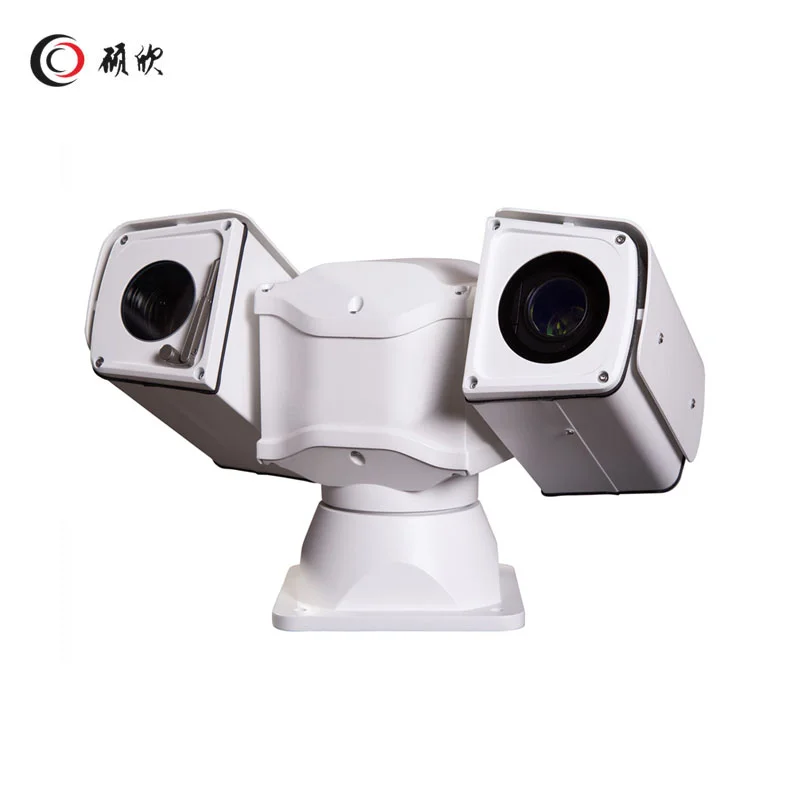Long-range IR laser illumination greatly boosts modern Night Vision systems. It provides strong, hidden light for seeing in total darkness. Unlike older LED-based IR lights, laser illuminators give better control over the beam, reach farther (up to 150 meters or more), and work well with zooming lenses. Important features like choosing different wavelengths (808nm, 850nm, 940nm), adjusting focus, and managing power make them perfect for tasks like guarding borders, military missions, or watching wildlife. Shuoxin, a company that makes tough, high-quality IR laser products, offers solutions like the secret SX-LR940 series or the far-reaching SX-LR850. These ensure great results in tough places. Picking the right illuminator depends on the wavelength you need, how well you can control the beam, and where you’ll use it.
What Makes Night Vision Devices Functional in Darkness?
Night Vision technology lets you see when it’s dark or there’s no light at all. It does this by making small amounts of light stronger or by using invisible infrared (IR) energy. Most Night Vision devices work in two ways: image intensification or thermal imaging. Image intensification grabs tiny bits of light, like from the moon or stars, and makes them brighter using a special tube called a photocathode. This creates a clear picture you can see.
But when there’s no light at all, these devices need IR illumination to work well. That’s where infrared laser technology becomes very important. Unlike regular lights you can see, IR lasers send out light that humans can’t see but Night Vision sensors can pick up.
Why Is Infrared Light Essential for Visibility in Low-Light Conditions?
In pitch-black darkness, even the best image intensifiers struggle without extra light. Infrared light solves this problem. It acts as a hidden light source that makes things visible without showing where you are.
Night Vision Supplement Light: This extra IR light makes Night Vision devices work better than when they only use natural light. Whether you’re watching a faraway fence or moving through thick woods at night, IR illumination helps you see important details.
Lasers perform much better than older LED-based IR lights. They give stronger light and better aim, which means they work well over long distances.
How Does Long-Range IR Laser Illumination Outperform Other Technologies?

When you need to see far away for tasks like spying or checking areas, long-range IR laser illuminators are super helpful. These systems can send tight beams hundreds of meters away. This lets you spot things from a safe distance.
IR Distance 2 Groups Lens, 150m Night Vision: This kind of power is key for jobs like guarding borders or studying animals, where you can’t get close. The narrow beam keeps light from spreading too much. This helps you stay hidden and saves energy.
Plus, these lasers work great with zooming cameras. When your camera zooms in on something far away, the laser’s beam can adjust to keep the light even, no matter how much you zoom.
What Features Should You Look for in a Long-Range IR Laser Illuminator?
Picking the right illuminator means understanding the main features that affect how well it works and how easy it is to use.
Wavelength Selection and Its Impact on Performance: 808nm vs 850nm vs 940nm
The wavelength decides how well the light works and whether it’s visible. The 808nm and 850nm wavelengths give bright light but might show a faint red glow at the source. These are good for regular watching tasks. The 940nm wavelength is hidden, which is great for secret missions where you don’t want to be seen.
Beam Adjustment and Focus Mechanisms
A good illuminator lets you change the focus to match what you’re looking at. Whether you’re scanning a big area or focusing on one spot, adjusting the beam helps you see clearly and cover the right area.
Power Output and Heat Management
More power means the light can go farther, but it also makes more heat. Good illuminators have ways to cool down so they work steadily and last longer, even if you use them for a long time.
Where Are Long-Range IR Laser Illuminators Most Effectively Used?
These illuminators are useful in many different jobs and places.
Border Security and Perimeter Monitoring
In faraway places with little setup, you need to see far. With a Night Vision distance of 120 to 150 meters, long-range IR lasers spot problems early. This gives teams time to act before trouble gets close.
Law Enforcement and Tactical Operations
For police or soldiers working at night, staying hidden is very important. Tactical teams use laser illuminators that work with scopes or headgear optics. These stay invisible to others, keeping the team safe.
Wildlife Observation and Environmental Monitoring
Scientists studying animals at night don’t want to scare them. Hidden IR lasers let them watch from far away without bothering the animals. This helps them get clear videos without changing how the animals act.
What Solutions Does Shuoxin Offer for Enhanced Night Vision Performance?
If you need strong solutions for top-quality Night Vision systems, Shuoxin has a great range of products made for tough situations. Shuoxin specializes in light-based technologies, including long-range infrared laser modules. Their products work well for security, defense, science, and industry needs.
Their devices are built to perform well and last long. They work even in rough conditions like rain, dust, or very hot or cold weather.
SX-LR850 Series: High-Power 850nm Laser Illuminators Built for Extended Range Applications
The SX-LR850 Series gives strong light at the popular 850nm wavelength. It’s great if you need to see far and work with most Night Vision optics.
SX-LR940 Series: Ultra-Covert Illumination Designed for Tactical Environments
For jobs needing total secrecy, the SX-LR940 series gives high-quality infrared light at 940nm. This is invisible to people but works perfectly with modern sensors.
SX-ZoomSync Module: Seamless Beam Control That Synchronizes With Zoom Lenses Automatically
This module makes sure the laser beam matches your camera’s zoom level. It keeps the light steady, whether you’re looking at a wide area or a faraway target.
How Do These Products Improve Night Vision Systems Overall?
Each Shuoxin product makes Night Vision systems better by offering:
- Even Beam and Far Reach: The light spreads smoothly and goes a long way, helping you see clearly.
- Tough Build for Harsh Places: The casings are strong and handle tough weather or environments.
- Easy Fit with Cameras: The products connect easily to camera setups with standard or custom mounts.
Whether you’re fixing an old system or starting a new one, Shuoxin’s flexible products make it simple to meet your needs without losing quality or dependability.
How Should You Choose the Right Infrared Laser Illuminator Based on Your Needs?
Choosing the best illuminator means matching its features to what you need for your job.
Match Wavelengths With Visibility Needs Across Different Use Cases
If staying hidden is most important, like in secret missions, pick 940nm models. For watching large areas where a little glow doesn’t matter, go with 850nm units. They give brighter light for general use.
Evaluate Beam Control Features That Align With Your Surveillance Setup
Make sure the device lets you adjust the focus to match your camera’s zoom. This is important if you switch between wide views and close-up shots during your work.
Consider Installation Flexibility Based on Deployment Environment
The illuminator should work for fixed spots, like on poles, or movable setups, like on drones or cars. This depends on how you plan to use it for watching or tracking.
FAQ
Q1: Can I use long-range IR laser illuminators indoors?
A: You can, but it’s not a good idea unless you’re in a big space like a warehouse. Close-up use might harm equipment or be unsafe because the light is too strong.
Q2: What’s the difference between LED-based IR lights and laser-based ones?
A: LED lights spread out widely but lose strength over distance. Lasers send tight beams that go farther with less spreading. This makes them better for long-distance jobs.
Q3: How do I know which wavelength is best suited for my camera system?
A: Look at your device’s sensor range. Most work well with 850nm light. Some advanced ones also handle 940nm, which is great for hidden operations.


